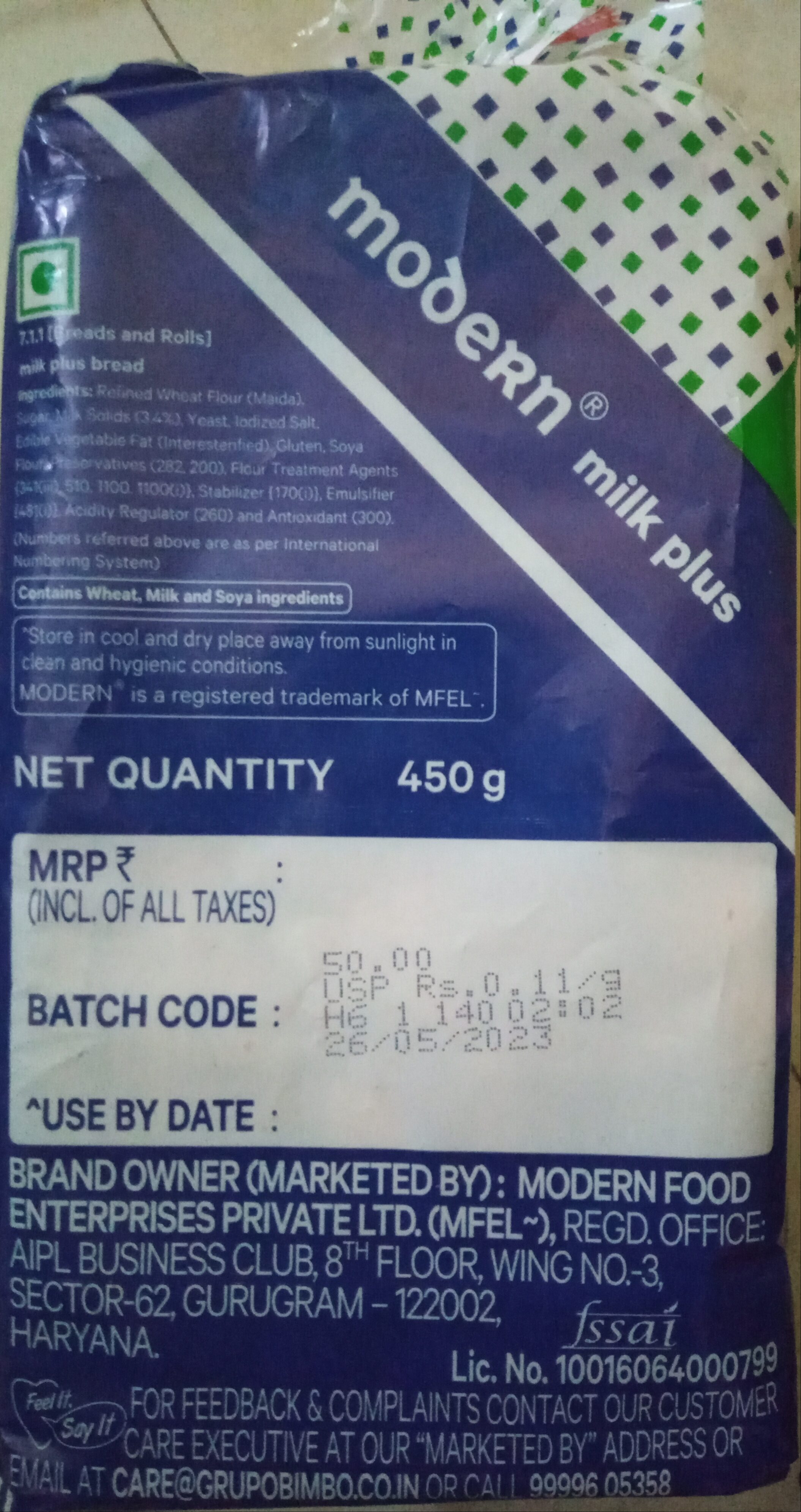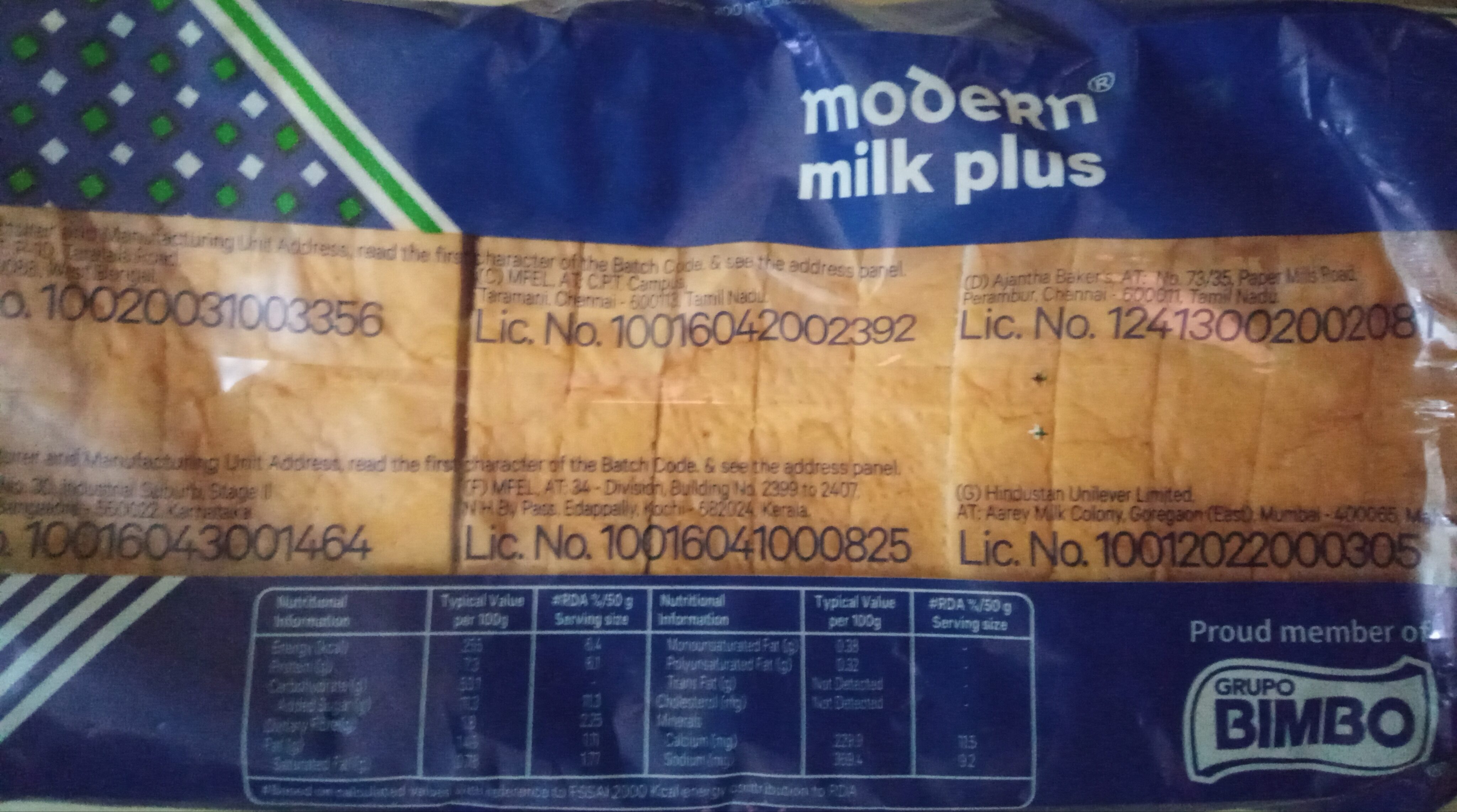Milk Plus Bread - Modern - 450g
This product page is not complete. You can help to complete it by editing it and adding more data from the photos we have, or by taking more photos using the app for Android or iPhone/iPad. Thank you!
×
Barcode: 8904043553054 (EAN / EAN-13)
Quantity: 450g
Packaging: Plastic
Brands: Modern
Categories: Plant-based foods and beverages, Plant-based foods, Cereals and potatoes, Breads
Labels, certifications, awards:
Vegetarian, Green Dot India
Countries where sold: India
Matching with your preferences
Environment
Packaging
Transportation
Report a problem
Data sources
Product added on by krishanti
Last edit of product page on by krishanti.
Product page also edited by roboto-app.
If the data is incomplete or incorrect, you can complete or correct it by editing this page.









